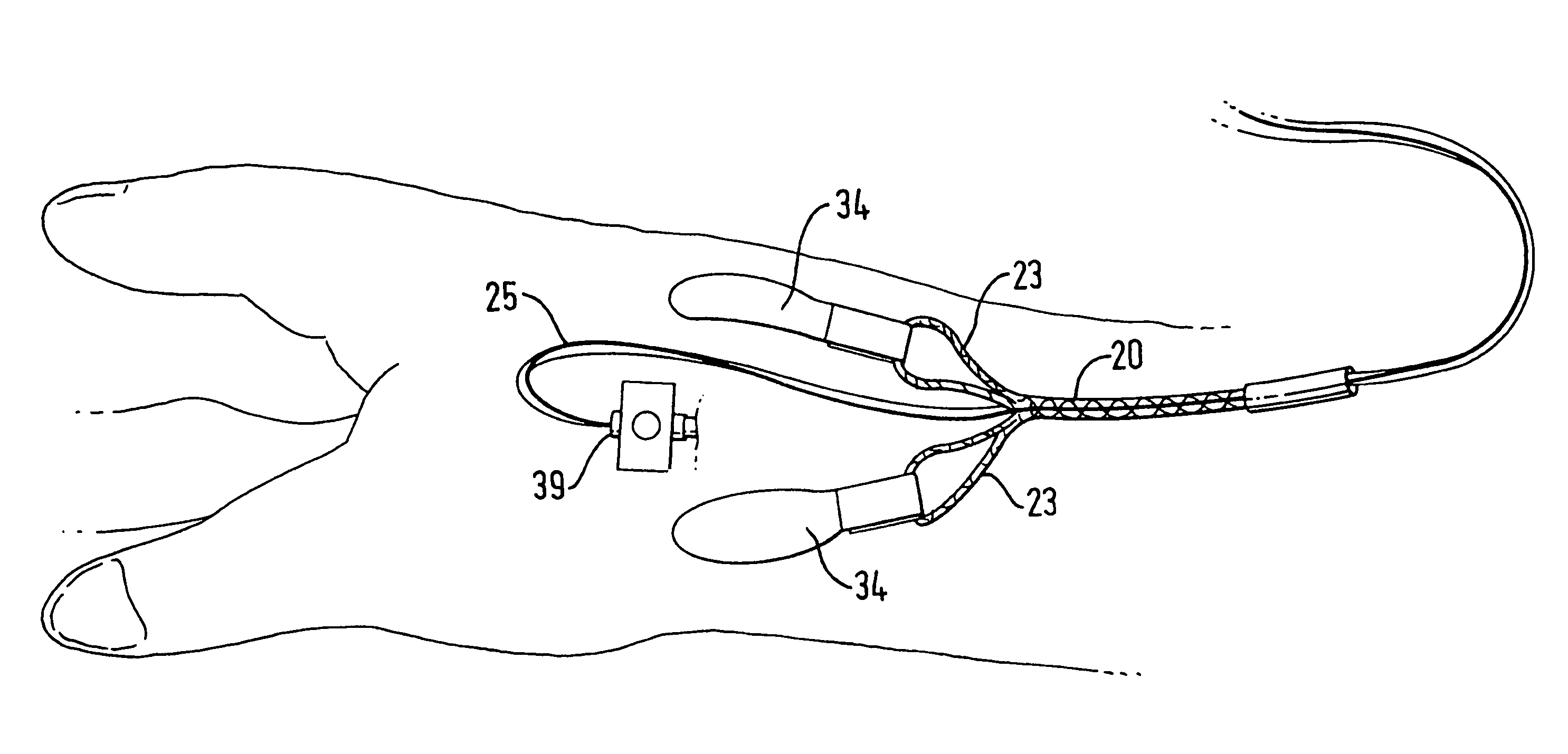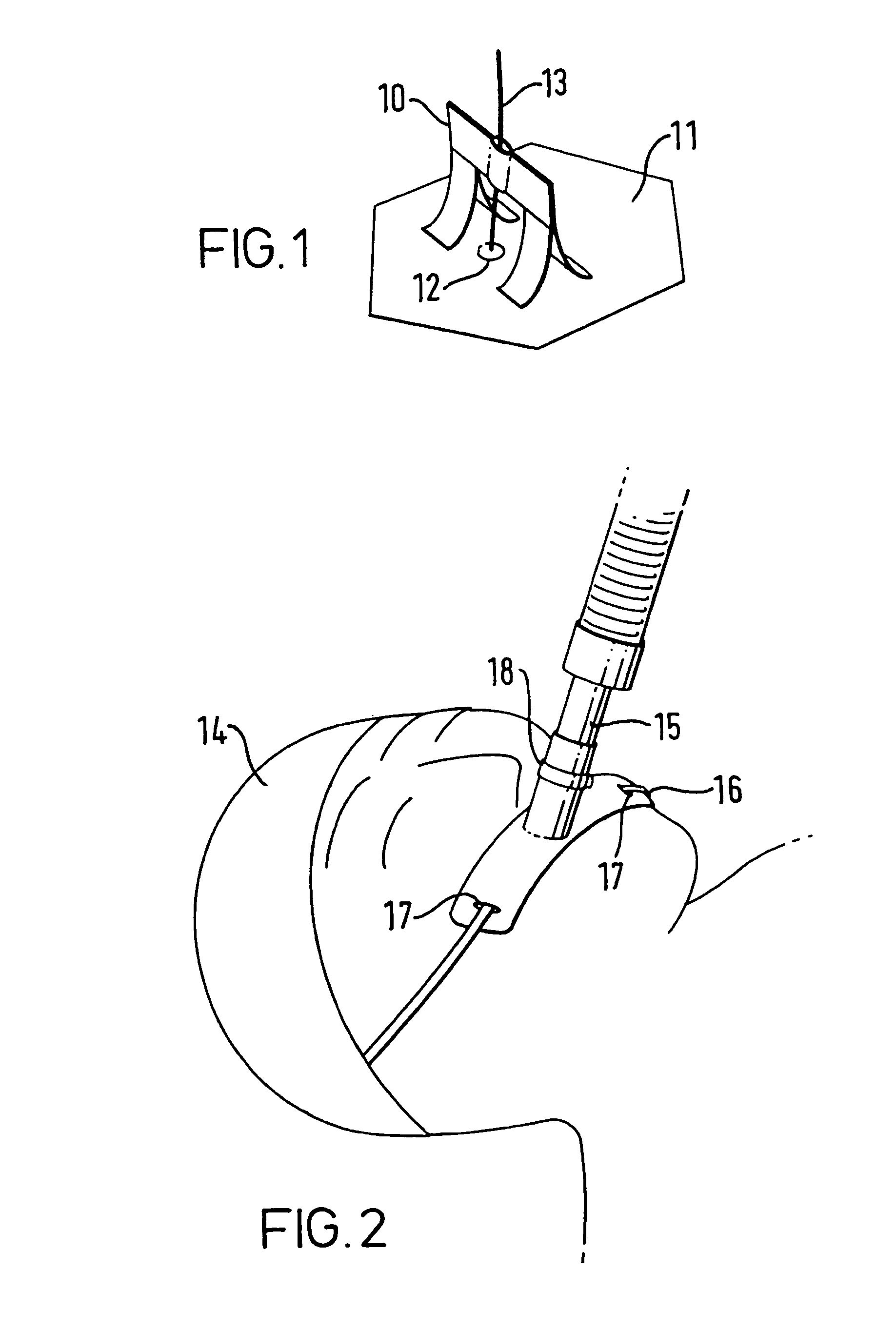Method of securing a line to a patient, fasteners and their use to secure a line to a patient
a technology of fasteners and lines, applied in the direction of trachea tubes, flexible elements, infusion needles, etc., can solve the problems of inability to secure a line to a patient, the line is never inserted any deeper, and the risk of poor outcome or even death is notably higher, so as to prevent repeated, unnecessary, painful and invasive procedures, and the effect of simple and cheap solution
- Summary
- Abstract
- Description
- Claims
- Application Information
AI Technical Summary
Benefits of technology
Problems solved by technology
Method used
Image
Examples
Embodiment Construction
[0063]Reference has already been made to FIGS. 1 and 2 in the foregoing discussion of the prior art. Referring then to FIG. 3, a fastener 19 constructed in accordance with the present invention includes a generally tubular sleeve 20 defined by helically-wound and interwoven or intertwined filaments of nylon. The wall of the sleeve 20 may therefore be described as a braid or plait of foraminous or perforated mesh, grid, net or web, defining numerous openings which can be expanded or contracted as will become evident.
[0064]One end of the sleeve 21 is open and the other end 22 is closed. The closed end 22 includes attachment means in the form of loops 23 formed by doubling back and laterally compressing an end of the sleeve 20 and inserting the compressed end back into the sleeve 20 through an opening in its wall. The doubled-back sleeve 20 is glued in place so as to hold the loop formation.
[0065]For use in anchoring umbilical lines, the sleeve 20 preferably measures approximately 1 mm...
PUM
| Property | Measurement | Unit |
|---|---|---|
| Length | aaaaa | aaaaa |
Abstract
Description
Claims
Application Information
 Login to View More
Login to View More - R&D
- Intellectual Property
- Life Sciences
- Materials
- Tech Scout
- Unparalleled Data Quality
- Higher Quality Content
- 60% Fewer Hallucinations
Browse by: Latest US Patents, China's latest patents, Technical Efficacy Thesaurus, Application Domain, Technology Topic, Popular Technical Reports.
© 2025 PatSnap. All rights reserved.Legal|Privacy policy|Modern Slavery Act Transparency Statement|Sitemap|About US| Contact US: help@patsnap.com



